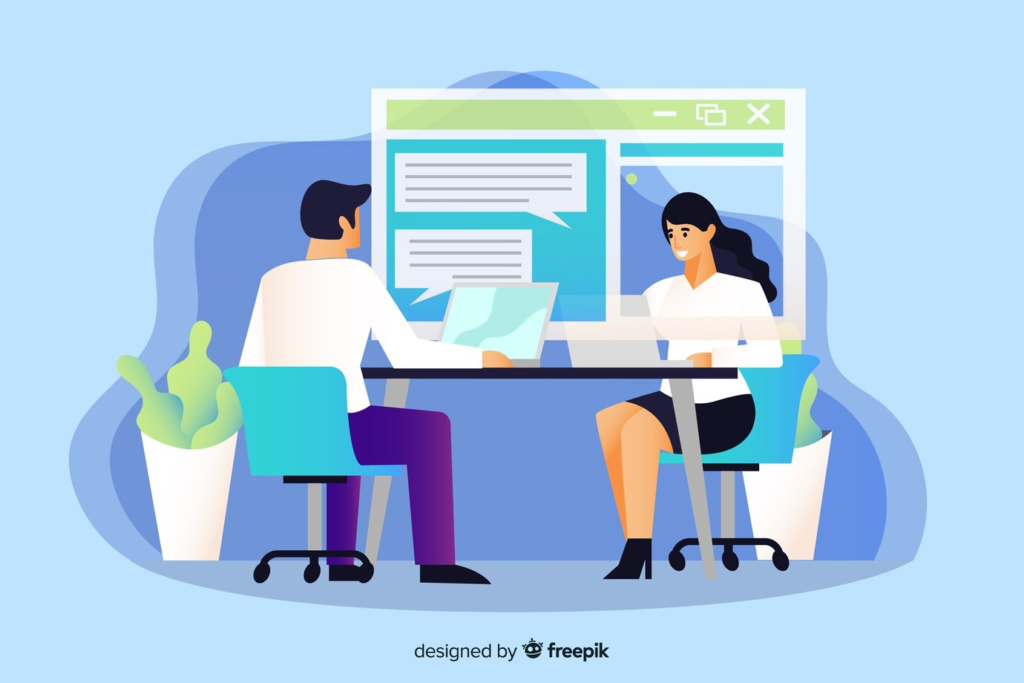Address
Work Hours
Monday to Friday: 9:00 AM - 6:00 PM
Address
Work Hours
Monday to Friday: 9:00 AM - 6:00 PM
You’ve just completed an interview for a job you’re excited about—congratulations! But now comes the waiting game. What you do after the interview can be just as important as how you performed during it. Following up appropriately can demonstrate professionalism, reinforce your enthusiasm for the role, and keep you on the hiring manager’s radar. However, it’s crucial to strike the right balance—being proactive without coming across as impatient or pushy.
In this guide, we’ll walk you through the best practices for following up after an interview, from sending a timely thank-you email to maintaining a professional connection. These strategies can help you leave a lasting positive impression and increase your chances of landing the job.

One of the most crucial steps in following up after an interview is sending a thank-you email. This should ideally be sent within 24 hours of your interview while your conversation is still fresh in the interviewer’s mind. A well-crafted thank-you email expresses your appreciation for the opportunity, reiterates your enthusiasm for the role, and highlights any key discussion points that reinforce your suitability for the position.
When writing this email, ensure it is personalized. Mention specific details from the interview, such as a topic discussed or a shared interest, to make it more memorable. Express gratitude for the interviewer’s time and for providing insights into the role and company. Additionally, restate your interest in the position and briefly highlight how your skills and experiences align with the company’s needs.
Keep the email concise, professional, and error-free. If you interviewed with multiple people, consider sending individual thank-you emails to each of them. A well-executed thank-you email can leave a lasting impression and set you apart from other candidates.
If the interviewer provided a specific timeline for their decision-making process, respect that timeframe before following up. However, if the given deadline has passed without any communication, it is acceptable to send a polite follow-up email. This message should be professional, concise, and reaffirm your interest in the position.
Start by thanking the interviewer again for their time and expressing your continued enthusiasm for the role. Politely inquire if there are any updates regarding your application status and if they require any additional information from you. Avoid sounding impatient or pushy; instead, frame your follow-up as a professional check-in.
For instance, you could write: “I hope you’re doing well. I wanted to check in on the status of my application and see if there’s anything else I can provide to assist in the decision-making process. I remain very excited about the opportunity to join [Company Name].”
This approach keeps you on the interviewer’s radar without being intrusive. If you do not receive a response immediately, wait at least another week before considering a second follow-up.
Connecting with your interviewer on LinkedIn can be a great way to stay on their radar and build a professional relationship, regardless of the outcome. Before sending a connection request, ensure that your profile is up to date and reflects your expertise in the field. When sending the request, include a brief personalized note thanking them for the interview and expressing interest in staying in touch.
For example, you might write: “Hi [Interviewer’s Name], I really appreciated the opportunity to interview for [Position] at [Company Name]. I enjoyed our conversation about [specific topic] and would love to stay connected.”
By engaging with the interviewer’s content—liking or commenting on relevant posts—you can maintain a passive but positive presence in their network. This can be beneficial if another suitable opportunity arises within the company in the future.
However, be mindful not to overdo it. Sending too many messages or engaging excessively with their content might come across as overly persistent. A professional and subtle approach works best.
Following up after an interview is essential, but it’s equally important to recognize when to move on. If you’ve followed up appropriately and still haven’t received a response, it may be time to focus your efforts elsewhere. Some companies have lengthy hiring processes, but a lack of communication after multiple follow-ups could indicate that they have moved on with another candidate.
Instead of waiting indefinitely, continue applying to other positions and attending interviews. Keeping your job search active ensures you don’t miss out on other great opportunities.
If, after some time, you receive a rejection email, respond professionally, thanking the interviewer for the opportunity and requesting feedback. This leaves the door open for future opportunities and helps you improve for subsequent interviews.
Following up after an interview is a key component of job searching that can enhance your chances of securing the position. A well-timed thank-you email, a respectful inquiry about the hiring process, and maintaining a professional connection can all work in your favor. However, it’s also essential to be patient and recognize when to move on. By following these strategies, you can navigate the post-interview process with confidence and professionalism.
NOTE:- For more JOBS, visit Daily Liv India.
Images sourced from Freepik.